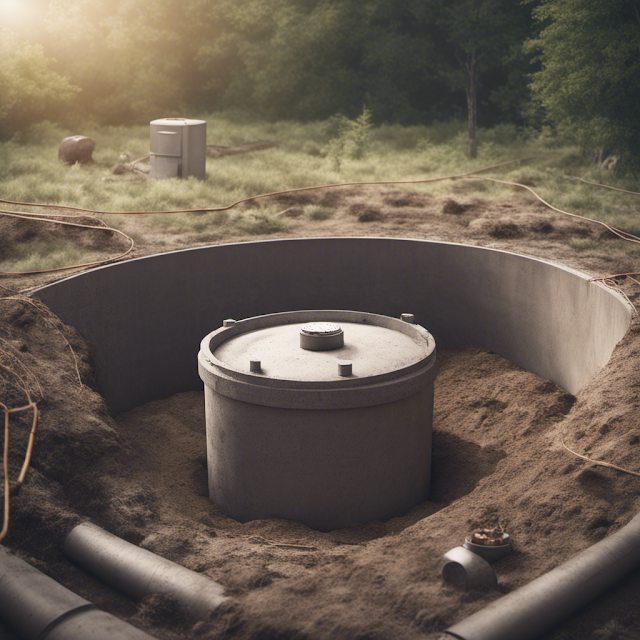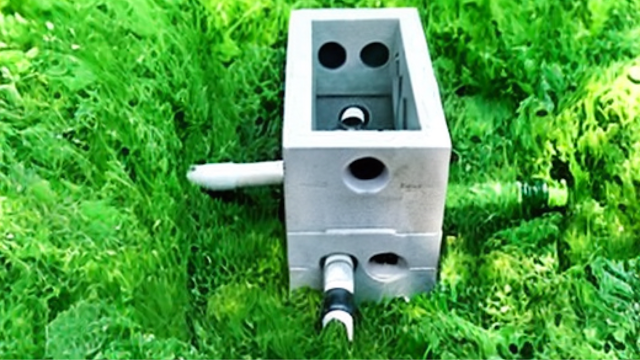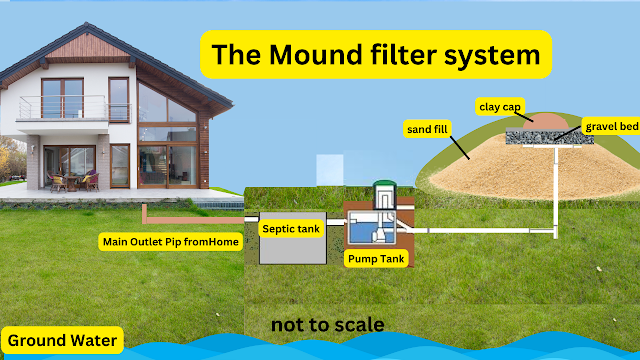1960s Septic Tank Design
 |
| 1960s Septic Tank Design |
Introduction to 1960s Septic Tank Design
In the 1960s, you've witnessed a significant evolution in septic tank design. Concrete tanks have become increasingly popular due to their durability and longevity. Filtering systems have also improved, ensuring better wastewater treatment. Drainage technology advancements have allowed for better distribution of effluent. Old Septics have come a long way since the 1960s
Furthermore, tank size and capacity have been innovatively designed to accommodate varying needs. As a responsible homeowner, it's crucial to understand the importance of regular septic tank inspections to ensure optimal performance. Additionally, environmental considerations and regulations have shaped the way these systems are designed and maintained.
The Rise of Concrete Tanks
You'll be amazed at the durability and efficiency of concrete septic tanks. Concrete tanks have been gaining popularity for their numerous advantages when compared to plastic tanks.
Concrete tanks are known for their long lifespan, lasting up to 40 years with proper maintenance. In contrast, plastic tanks typically last around 20 years.
Concrete tanks also offer superior strength, making them resistant to damage from external forces such as tree roots or heavy machinery.
While plastic tanks may be cheaper initially, the cost comparison over time favors concrete tanks due to their longevity.
Additionally, concrete tanks have better insulation properties, preventing temperature fluctuations that can affect the bacterial activity in the tank.
Improved Filtering Systems
To enhance the efficiency of your septic tank, implementing improved filtering systems is essential.
By incorporating improved filtration techniques and alternative materials, you can effectively remove contaminants from the wastewater and prevent them from polluting the environment.
One such technique is the use of advanced media filters, which consist of layers of sand, gravel, and other media that trap and remove solids and bacteria. These filters provide a higher level of treatment compared to traditional septic tanks.
Additionally, alternative materials such as peat moss or coconut fiber can be used as filter media, offering better filtration capabilities and longer lifespan. These materials have a high absorption capacity and effectively remove pollutants, ensuring cleaner effluent discharge and protecting groundwater quality.
Implementing these improved filtering systems will greatly improve the performance and effectiveness of your septic tank.
Advancements in Drainage Technology
Your septic tank's drainage system has seen significant advancements in technology, leading to improved performance and efficiency.
Recent advancements in drainage technology have revolutionized the way wastewater is processed and disposed of. One major advancement is the introduction of aerobic treatment systems, which use oxygen to break down organic matter more effectively, resulting in cleaner effluent.
Additionally, the development of advanced drainfield designs, such as pressure distribution systems and drip irrigation systems, has improved the distribution of effluent into the soil, reducing the risk of clogging and increasing the overall lifespan of the system.
These advancements in drainage technology haven't only improved the functionality of septic systems but have also enhanced their environmental sustainability.
As we move forward, it's important to consider the innovations in tank size and capacity to further optimize septic system performance.
Innovations in Tank Size and Capacity
One major innovation in septic tank design is the incorporation of larger tank sizes and increased capacity. With advancements in material technology, septic tanks can now be constructed to hold larger volumes of wastewater, allowing for more efficient and effective treatment.
These larger tanks are designed to accommodate the increased wastewater flow generated by larger households or commercial establishments. By increasing the tank capacity, it ensures that the wastewater has enough time to separate and settle, allowing for better treatment.
This innovation has a significant impact on groundwater quality. By having larger tank sizes and increased capacity, it reduces the risk of overflow or leakage, preventing untreated wastewater from contaminating the surrounding soil and groundwater.
The Role of Septic Tank Inspections
Regular inspections of your septic tank are essential to ensure its proper functioning and longevity.
During inspections, professionals will conduct common procedures such as visual examination, sludge and scum level measurement, and checking for any signs of leakage or damage.
Importance of Regular Inspections
Do you know why it's important to regularly inspect your septic tank?
Regular inspections play a crucial role in maintaining the functionality and longevity of your septic system. By conducting routine inspections, you can identify and address any potential hazards or issues before they become major problems.
Regular maintenance is key to preventing costly repairs and avoiding the risk of environmental contamination. Neglecting to inspect your septic tank can lead to clogs, leaks, and backups, which can contaminate groundwater and pose health risks.
During inspections, professionals can assess the condition of the tank, check for signs of wear and tear, and ensure that the system is operating efficiently. By investing in regular inspections, you can protect your septic tank and preserve the integrity of your entire septic system.
Common Inspection Procedures
To ensure the proper functioning of your septic tank, it's essential to regularly inspect it and perform necessary maintenance tasks. Regular inspections play a vital role in identifying potential issues before they become major problems. There are several common inspection procedures that should be followed to ensure the effectiveness of your septic tank.
First, visually inspect the tank for any signs of leakage or damage. Next, measure the scum and sludge levels to determine if pumping is necessary. Additionally, inspect the drain field for any signs of clogging or saturation.
Regular inspections help to ensure that your septic tank is operating efficiently and can prevent costly repairs or replacements. By staying proactive and conducting routine inspections, you can maintain the health and longevity of your septic tank system.
In order to ensure proper tank maintenance, it's important to follow a few key steps.
Ensuring Proper Tank Maintenance
Make sure you regularly schedule professional septic tank inspections to effectively maintain your tank's functionality. Tank maintenance is crucial for the proper functioning and longevity of your septic system. Regular inspections help identify any potential issues or damage early on, allowing for timely repairs and preventing costly repairs or replacements in the future.
During these inspections, a trained professional will assess the condition of your tank, check for any leaks or blockages, and ensure that all components are working properly. They'll also measure the sludge and scum levels to determine if pumping is necessary. By staying proactive with proper maintenance, you can avoid potential health hazards, system failures, and costly repairs.
Now, let's move on to discuss the environmental considerations and regulations related to septic tank design and maintenance.
Environmental Considerations and Regulations
When considering septic tank design, it's crucial to take into account the potential impact on ecosystems, as well as health and safety.
The proper functioning and maintenance of septic tanks are essential to prevent contamination of groundwater and nearby bodies of water.
Additionally, compliance with regulations ensures that septic systems meet the necessary standards to protect the environment and public health.
Impact on Ecosystems
With proper maintenance and adherence to regulations, your septic tank design can minimize its impact on local ecosystems. Environmental impact is a crucial consideration when it comes to septic tank systems. By properly treating and disposing of wastewater, you can help preserve the delicate balance of ecosystems. One way to achieve this is through the use of advanced treatment technologies, such as aerobic systems or sand filters, which can significantly reduce the release of harmful contaminants into the environment.
Additionally, regular inspections and maintenance of your septic system can help identify and address any potential issues before they become major problems. By taking these steps, you can ensure that your septic tank design not only protects the environment but also promotes ecosystem preservation.
Moving forward, let's now discuss the important topic of health and safety.
Health and Safety
To ensure the health and safety of both you and the environment, it's important to understand and comply with the regulations surrounding septic tank design.
Health regulations and safety guidelines are put in place to protect individuals and prevent harm to the surrounding ecosystem. These regulations outline the specific requirements for septic tank installation, maintenance, and operation.
They cover aspects such as tank capacity, proper disposal of waste, and regular inspection and pumping. Adhering to these regulations helps prevent the contamination of groundwater and surface water sources, which can lead to the spread of diseases and environmental degradation.
Additionally, following safety guidelines ensures that septic tank systems are installed and maintained in a manner that minimizes the risk of accidents or injuries.
Compliance With Regulations
To ensure proper compliance with environmental regulations, it's essential that you understand and adhere to the guidelines for septic tank design. Compliance enforcement plays a crucial role in maintaining a healthy and sustainable environment.
When designing a septic tank system, it's important to consider its impact on groundwater. Groundwater serves as a primary source of drinking water for many communities, and contamination can have severe consequences on public health. By following the regulations, you can minimize the risk of groundwater contamination.
These regulations may include specific requirements for tank size, location, and maintenance procedures. Regular inspections and proper maintenance are necessary to ensure compliance and prevent any potential harm to groundwater.
It's your responsibility to stay informed about the regulations and make sure your septic tank design is in compliance with them.
Frequently Asked Questions
How Often Should a Septic Tank Be Pumped?
You should pump your septic tank regularly to ensure proper septic tank maintenance. The septic tank pumping schedule depends on factors like the tank size, number of people in the household, and water usage.
What Are the Signs of a Failing Septic Tank?
If your septic tank is failing, there are several signs to look out for. These include slow draining sinks and toilets, foul odors, sewage backups, and overly lush grass or vegetation near the tank.
Can I Build a Septic Tank Myself, or Is Professional Installation Necessary?
You can choose to DIY septic tank installation, but professional installation is recommended. Pros of professional septic tank installation include expertise, proper sizing, and adherence to regulations. Cons of DIY installation include potential mistakes and lack of knowledge.
What Are the Benefits of Using a Concrete Septic Tank Over Other Materials?
Using a concrete septic tank offers several benefits. It is eco-friendly, as concrete is a sustainable material. It is also cost-effective, as it has a long lifespan and requires minimal maintenance compared to other materials.
Are There Any Eco-Friendly Options Available for Septic Tank Design?
There are eco-friendly options available for septic tank design, such as sustainable designs that prioritize environmental impact reduction. These options aim to minimize resource consumption, promote efficient waste treatment, and support long-term sustainability.



.png)





Comments
Post a Comment